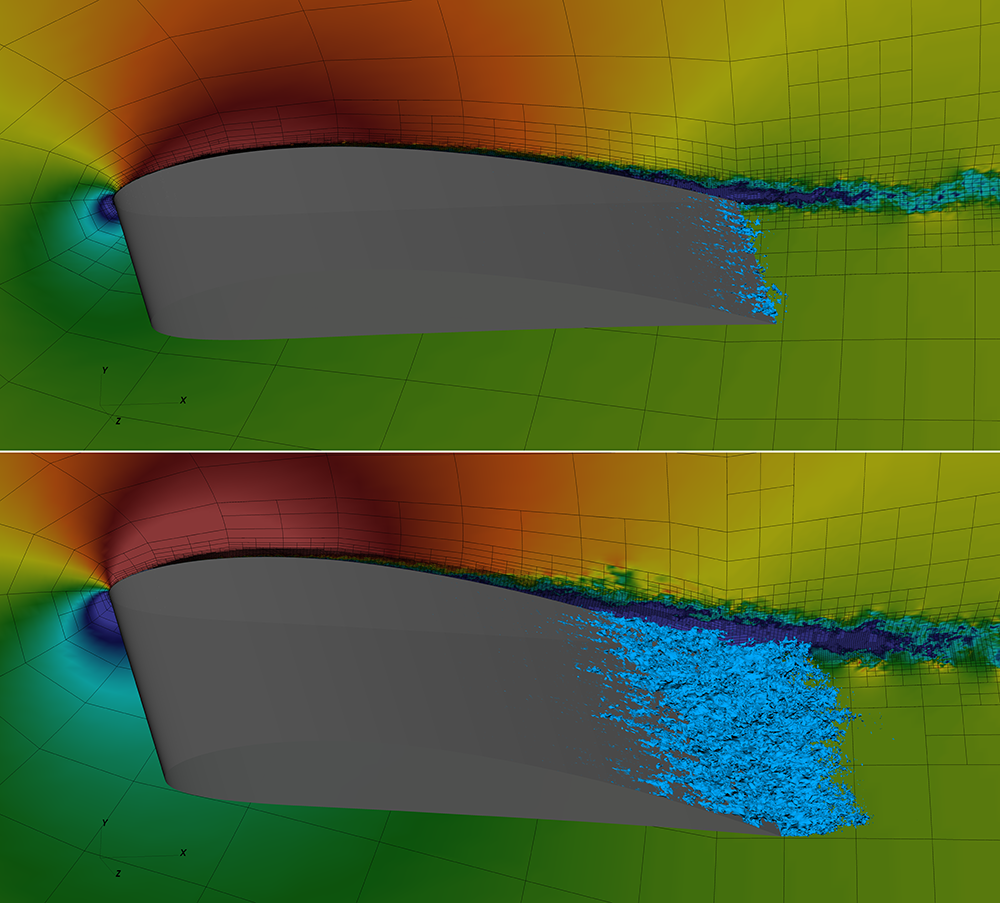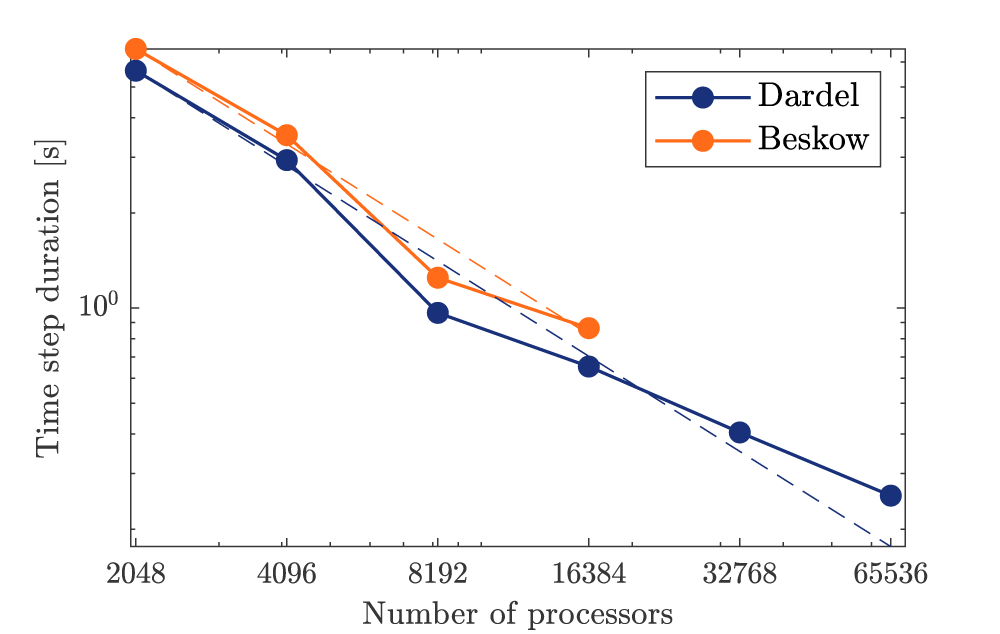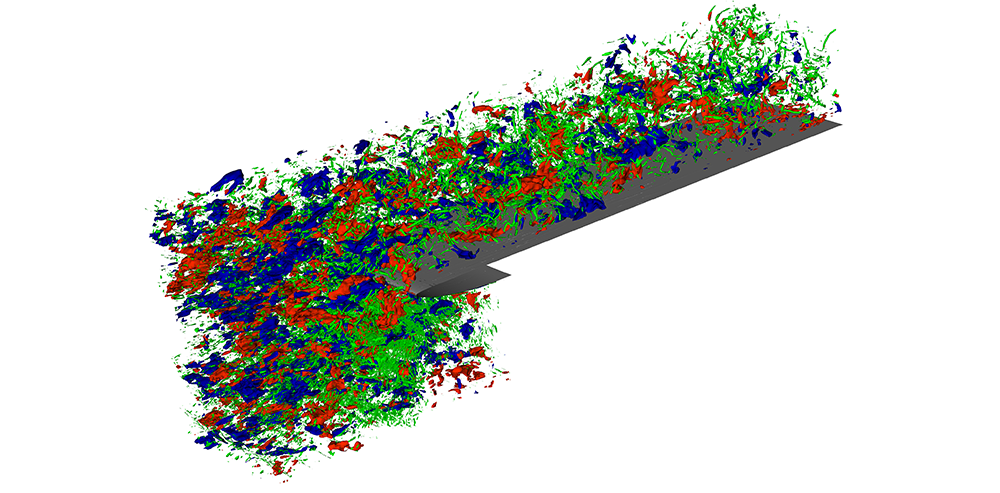Dardel-Pilots Simulate Wings Using NEK5000
Fermin Mallor, Kristina Durovic, Ardeshir Hanifi, Dan Henningson, Adam Peplinksi & Philipp Schlatter, KTH Engineering Mechanics, and Niclas Jansson, PDC
The pilot phase of the new high-performance computing system at PDC, Dardel, has been extensively used in the study of complex turbulent flow phenomena, mainly for two physical cases: the turbulent flow around an aerofoil at high angles of attack (AoA), and laminar-turbulent transition on a plate.
In our research, we study the behaviour of moving streamlined bodies submerged in a fluid; the prototype example is the motion of a wing in air, generating lift and drag. In the first case that was investigated during the pilot phase on Dardel, the turbulent flow around an infinite-span NACA 4412 wing profile at various Reynolds numbers (Rec = 200,000; Rec = 400,000 and Rec = 1,000,000) and angles of attack (AoA = 5° and AoA = 11°) was studied through well-resolved large-eddy simulations (LES), which are also referred to as quasi direct numerical simulations (DNS). The NACA family of aerofoils was standardized by the National Advisory Committee for Aeronautics (NACA) about a hundred years ago in an effort to characterize the properties of wings in a systematic way. The complex simulations using these wing profiles are made possible by the introduction of adaptive mesh refinement (AMR) and non-conformal meshing into the spectral-element method code Nek5000, which makes it possible to increase the domain size while reducing the computational cost. The present work focuses on the appearance of backflow events under strong adverse pressure gradients (APGs) and high Reynolds numbers, which is relevant for understanding the initial stages of stall. The figures below show regions of backflow events for two different angles of attack, with the spectral element mesh generated by means of AMR in the background.

Strong scalability tests were performed on Dardel with a periodic wing case with close to one million elements and polynomial order 7 (around half a billion grid-points). The results are shown in the figure below, along with a comparison with results from the same case run on PDC’s previous flagship system, Beskow. A clear performance increase (equivalent to around a 20% speed-up for the same number of CPU cores) is found for the new system as compared to Beskow.

As part of the pilot test phase for Dardel, laminar-turbulent transition on a flat plate caused by ambient free-stream turbulence (as happens, for example, in turbomachinery) has also been studied. Recently, an unexpected variation of transition location with the length scale of the free-stream turbulence (FST) was observed in the experiments performed in the KTH wind tunnel. These new simulations, which confirm some of those findings, will help with understanding the interaction of the FST with the boundary layer (especially in the region close to the leading edge), and which properties of FST really determine the transition location. This will help to clarify which effects really determine the transition location, and eventually allow for better models to be used in design processes.

